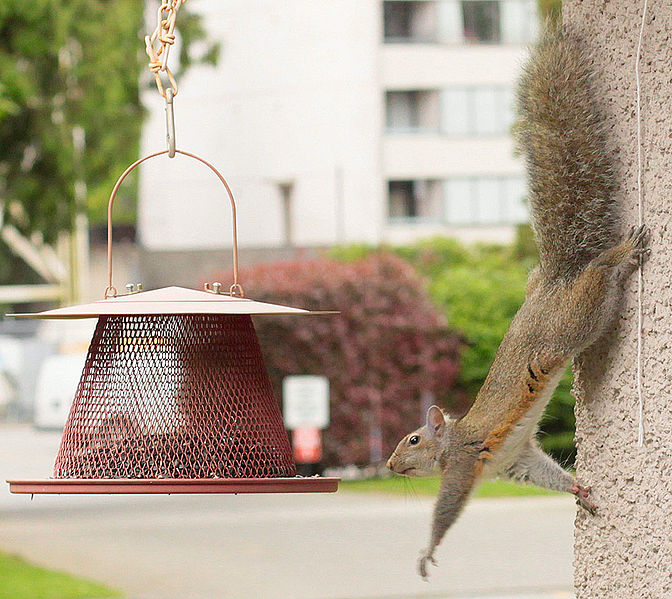
Adaptation
One adaptation that is extremely beneficial to a squirrel's lifestyle is the anatomy of their back legs. Squirrels are able to rotate their hind feet which allows them to descend down a tree head first. This is helpful for avoiding predation as well as reaching for food and traveling from tree to tree. They also have a heightened olfactory sense. This aids them in their search for food. A good memory also helps them to rediscover the food that they have hidden and stored for winter.
Eastern grey squirrels are known to communicate with other individuals through both body language and a variety of vocalizations. When they sense danger or a suspected predator they often warn each other with a variety of calls. They also exhibit different sounds during mating season. Vocalizations vary including high pitched squeaks, low pitched chatter, and deep rhaspy calls. The sounds have been described as sounding like “buck buck buck” and “mehr mehr mehr”, and are often accompanied by postural changes and tail flicks.
Visit the NUTRITION page to learn about the diet of the Eastern grey squirrel and also learn about how people use squirrels for food. Or you can return to the homepage
